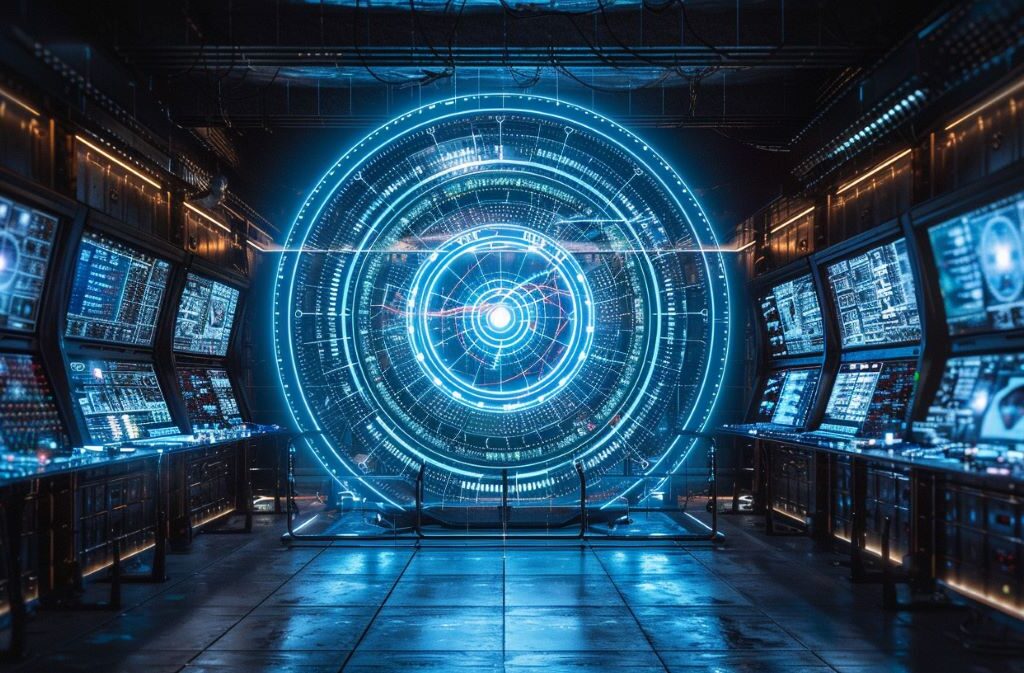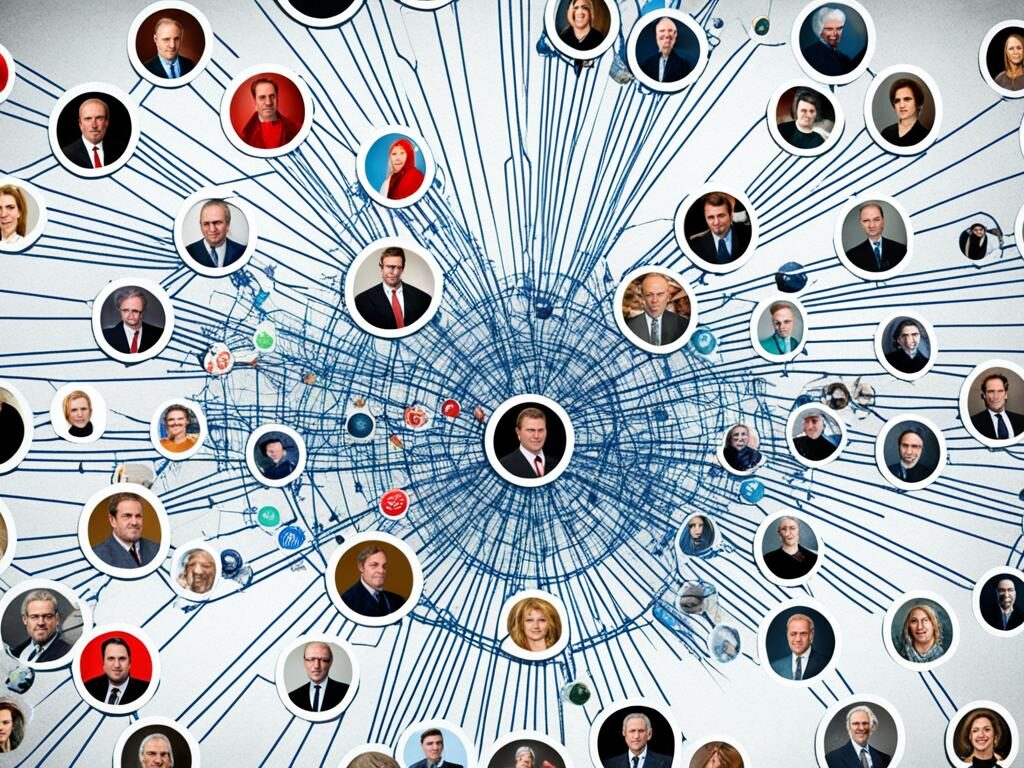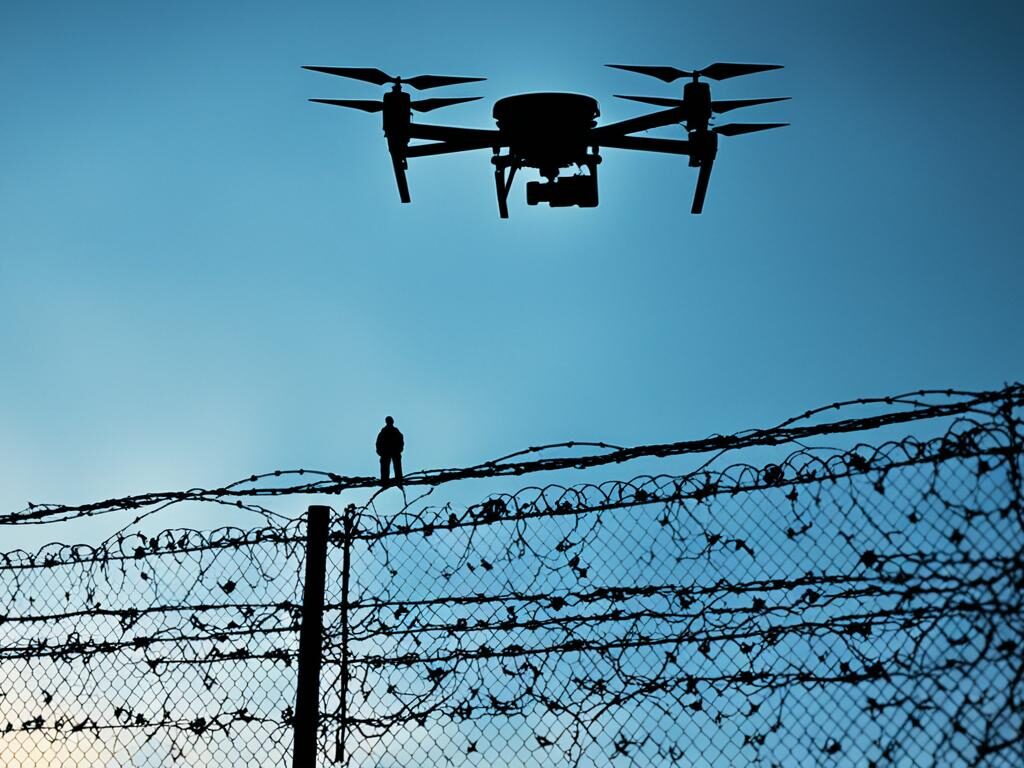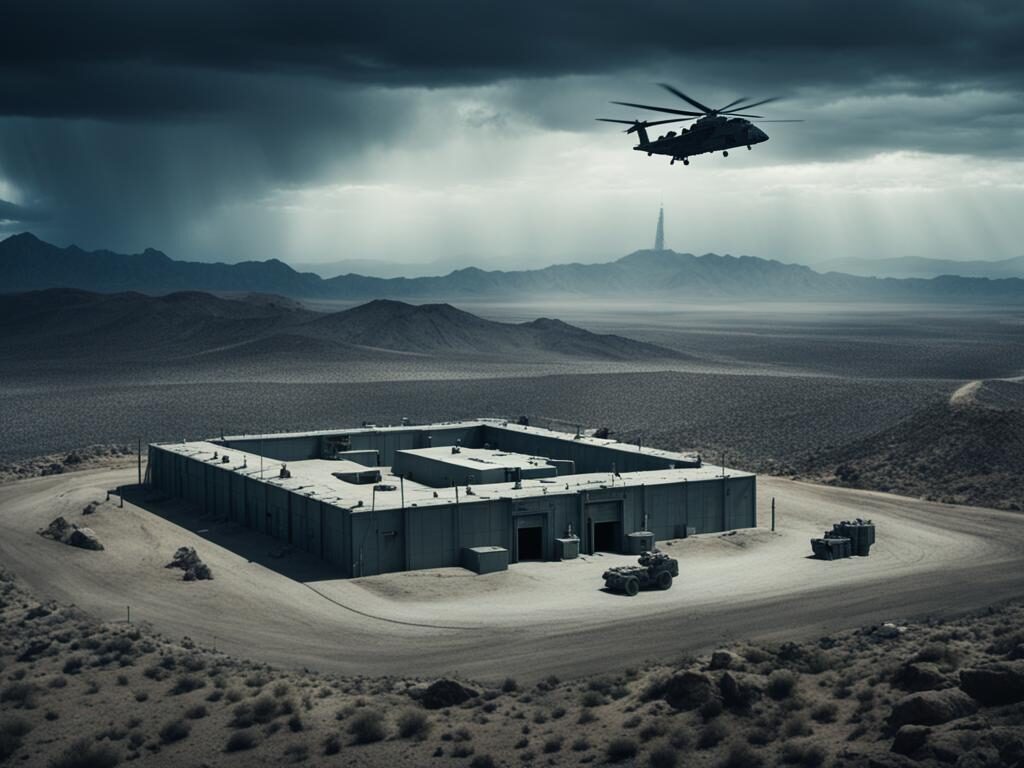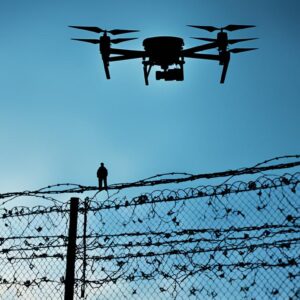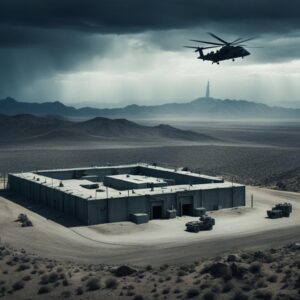An encounter between a Navy F/A-18 Super Hornet and an unknown object. It was released by the Defense Department’s Advanced Aerospace Threat Identification Program
In the vastness of the Department of Defense’s annual budget, which amounts to approximately $600 billion, a small sum of $22 million was allocated to a program that has intrigued both the public and researchers alike. This program, known as the Advanced Aerospace Threat Identification Program (AATIP), was not easily identifiable within the labyrinth of the Pentagon’s budget, a testament to the discretion with which the Pentagon operated it.[1][2]
Origins and Objectives of AATIP
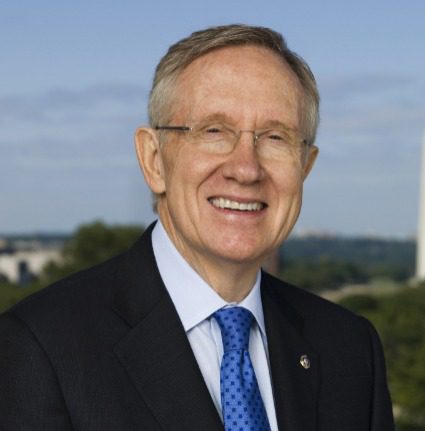
Harry Reid, the former Senate majority leader
The AATIP came into existence in 2007, initially receiving substantial funding through the advocacy of Harry Reid, a Nevada Democrat and the Senate majority leader at the time. Reid’s interest in space phenomena, combined with his connection to billionaire entrepreneur Robert Bigelow, who has been a significant figure in aerospace research, was a driving force behind the program’s inception.[3]
Research Focus
The program’s primary objective was to investigate reports of unidentified flying objects (UFOs) conducting in-depth analyses of sightings and encounters, especially those brought forward by service members. This investigative effort encompassed not only sightings but also the study of materials and physical effects associated with these encounters.[4]
Operational Dynamics and Secrecy

Operated deep within the Pentagon’s C Ring, the AATIP was led by Luis Elizondo, a military intelligence official. The choice of location and the program’s classified segments underscored the level of confidentiality under which the program operated, aligning with the Pentagon’s preference for secrecy regarding its existence and objectives.
Continuation Beyond Official Closure
Although the Pentagon announced the closure of the AATIP in 2012 due to a reallocation of funding towards higher priority issues, reports suggest that the program’s activities persisted. Elizondo’s efforts, alongside contributions from other Defense Department officials, ensured the continuation of its investigative mission in an unofficial capacity.
Financial Aspects and Contributions
Budget Allocation and Utilization
A closer look at the financial underpinnings reveals that the $22 million budget, spanning from 2007 to 2012 allocated towards management, research, and assessment of threats posed by unidentified aerial phenomena. The funding specifics are as follows:
| Year | Funding Allocation | Primary Use |
| 2007-2012 | $22 million | Program management, research, threat assessment |
Contributors and Stakeholders
- Harry Reid: Advocated for the program’s funding, driven by a personal interest in UFOs and a connection with Robert Bigelow.
- Robert Bigelow: His company, Bigelow Aerospace, received the bulk of the program’s funding to conduct research and store materials related to UFOs.
- Luis Elizondo: Led the program’s efforts from within the Pentagon, ensuring its operational continuity even after official funding ceased.
- Service Members: Provided crucial sightings and encounter reports that formed the basis of the program’s investigations.
Research Findings and Public Disclosures
- Aircraft Sightings: Documents produced under the program detailed observations of aircraft exhibiting unusual velocity and maneuverability, with no visible means of propulsion. The report states that UAP reporting is “on the rise,” which leads to “a better understanding of the airspace and a higher chance of explaining UAP incidents.” The number of UAP reports reached 510 by August 2022.
- Material Studies: The program contracted with private aerospace companies, such as Bigelow Aerospace, was to study the physical evidence and potential explanations of the UAPs. Bigelow Aerospace was tasked with modifying facilities for the storage and examination of materials believed to be associated with UFOs. These materials were reportedly recovered from various crash sites or encounters with UAPs and were said to have anomalous properties or capabilities.
- Physiological Studies: Researchers examined individuals who claimed to have experienced physical effects from encounters, looking for physiological changes.

The founder of Bigelow Aerospace, while optimistic about humanity’s departure from Earth, also believes in the arrival of aliens. In a recent TV interview, he mentioned that extraterrestrials are already among us, suggesting an ongoing extraterrestrial presence. This statement, especially coming from a key figure in the lucrative space industry, raised some eyebrows.
However, it really shouldn’t be surprising. For years, surveys have shown that around one-third of people share Bigelow’s belief, convinced that extraterrestrial beings are exploring our planet, sometimes making their presence known through incidents like crashes in the New Mexico desert or by flying too close to our missile sites.
Challenges and Controversies
Skepticism and Scientific Perspective
Critics like James E. Oberg, a former NASA space shuttle engineer, and Sara Seager, an astrophysicist at M.I.T., emphasize the need for critical scrutiny and scientific methodology in interpreting U.F.O. sightings. Their cautionary stance reflects a broader debate on the interpretation of unexplained phenomena, underscoring the challenge of distinguishing between extraordinary technological capabilities and more prosaic explanations.
Luis Elizondo, the leader of the Pentagon’s initiative to research UFOs until October, stepped down in objection to what he described as undue secrecy and internal resistance to the program.
Luis Elizondo’s resignation in 2017, motivated by what he perceived as excessive secrecy and internal opposition within the Pentagon, underscores the internal challenges faced by the program. His concerns highlight the delicate balance between national security, scientific inquiry, and the public’s right to know.
Global Context and Comparative Analysis
The AATIP’s efforts to investigate unidentified aerial phenomena place the United States in a unique position relative to its global counterparts. Robert Bigelow’s assertion that the U.S. is “the most backward country in the world on this issue” contrasts with the more open approaches of countries like China, Russia, and several European and South American nations. These countries are noted for their willingness to discuss and investigate U.F.O. phenomena openly, without the stigma that often accompanies such discussions in the U.S.
A video shows a 2004 encounter near San Diego between two Navy F/A-18F fighter jets and an unknown object.
Impact and Legacy
Contributions to U.F.O. Research
The program’s legacy, as seen through the lens of those involved and the public’s reaction to its revelations, suggests a significant impact on the conversation surrounding aerospace phenomena and national security. By funding research and investigation into unexplained aerial objects, the AATIP has contributed to a gradual destigmatization of U.F.O. studies, encouraging a more scientific and serious approach to the subject.
Continued Advocacy and Research
The transition of figures like Luis Elizondo and Harold E. Puthoff to commercial ventures aimed at advancing U.F.O. research indicates a sustained interest and belief in the importance of understanding efforts, alongside those of other former Defense Department officials, underscore the evolving landscape of U.F.O. research and the potential for future discoveries that could challenge our understanding of aerospace technology and extraterrestrial life.
The Advanced Aerospace Threat Identification Program (AATIP) represents a pivotal moment in the recognition and investigation of unidentified flying objects by the U.S. government. Despite its secretive nature and the controversy surrounding its funding and findings, the program has sparked a global conversation about UFOs and the necessity for a transparent investigation.
The persistence of the program’s efforts, even in the absence of official Department of Defense funding, alongside the public’s growing interest, signifies a shift towards more openness and serious inquiry into aerial phenomena that defy conventional explanation.
Program’s Impact on Policy and Defense
The implications of the AATIP’s findings for national security and aerospace defense strategy are profound. By acknowledging the existence of technologies beyond current understanding, the program has prompted questions about the U.S.’s preparedness to encounter or engage with such technologies. The dialogue initiated by the program’s disclosures has the potential to influence future defense policies and research priorities, emphasizing the need for advanced aerospace threat identification and response capabilities.
Scientific and Technological Exploration
The AATIP has also played a crucial role in bridging the gap between military intelligence and scientific research. The collaboration between the Pentagon and entities like Bigelow Aerospace, as well as interactions with scientists and researchers, underscores the interdisciplinary nature of U.F.O. studies. This collaboration aims to demystify phenomena through rigorous scientific methods, leveraging advanced technologies for observation, analysis, and potentially, communication.
Public Perception and Media Engagement
The role of the media in shaping public perception of the AATIP and U.F.O. research cannot be overstated. High-profile disclosures, such as those made on CBS’ 60 Minutes and through investigative reports by the New York Times, have played a critical role in bringing the program’s activities to light. These revelations have spurred public interest and contributed to a more nuanced understanding of the phenomena under investigation. The coverage has facilitated a broader dialogue on the subject, engaging audiences worldwide and prompting other governments and private entities to share their findings or to initiate their investigations.
Challenges in Data Collection and Analysis
One of the significant hurdles faced by AATIP and subsequent research efforts is the collection and analysis of credible data. The program’s reliance on service member reports, video footage, and material analysis presents a complex puzzle:
- Service Member Reports: Eyewitness accounts from military personnel, while valuable, vary in detail and context, requiring careful verification and cross-referencing.
- Video and Audio Recordings: Analyzing footage of U.F.O. encounters involves sophisticated techniques to rule out conventional explanations and to identify abnormal characteristics.
- Material Analysis: Studying materials associated with U.F.O. encounters demands cutting-edge scientific tools and an interdisciplinary approach to understanding their properties and origins.
Future Directions and Research Opportunities
The legacy of the AATIP opens up several pathways for future research and exploration in the field of unidentified aerial phenomena:
- Interdisciplinary Collaboration: Strengthening partnerships between the military, scientific communities, and private sector to enhance the breadth and depth of research.
- Advanced Sensor Technologies: Developing more sophisticated detection and tracking technologies to capture high-quality data on U.F.O. encounters.
- Global Information Sharing: Encouraging international cooperation and data sharing to build a comprehensive understanding of U.F.O. phenomena on a global scale.
Efforts to demystify the phenomena surrounding UFOs have led to a critical examination of existing evidence and the pursuit of new lines of inquiry. Among these, the analysis of physical materials purportedly associated with U.F.O. encounters stands as a frontier in the scientific investigation into these phenomena.
Researchers and scientists, operating under the auspices of programs like the AATIP or within private ventures, are delving into the composition, structure, and potential origins of these materials. This endeavor not only seeks to validate the reality of the encounters but also to understand the technology behind these objects.
Engagement with eyewitnesses, particularly military pilots and personnel who have reported encounters with unidentified aerial phenomena, is being approached with a new level of seriousness and methodological rigor. The collection of eyewitness accounts, supported by radar data, infrared imaging, and other forms of electronic evidence, forms a composite picture of encounters that challenge conventional understanding of aerospace dynamics.
The academic community’s interest in these phenomena is also growing, with more scholars from the fields of physics, aerospace engineering, and astrophysics advocating for open, scientifically rigorous study of reports. This shift towards a more empirical and open-minded investigation is reflected in the establishment of dedicated research groups and the initiation of studies aimed at exploring the physics of U.F.O. phenomena.
The table below outlines key research areas and the methodologies being applied in the pursuit of understanding UFOs:
| Research Area | Methodology | Objective |
| Material Analysis | Spectroscopy, Metallurgy, Molecular Analysis | To determine the composition and potentially exotic properties of materials associated with UFOs. |
| Radar and Infrared Data Analysis | Signal Processing, Pattern Recognition | To analyze patterns and behaviors of UFOs that differentiate them from known objects. |
| Eyewitness Account Verification | Cross-referencing, Psychological Assessment | To assess the credibility of eyewitness reports and correlate them with physical evidence. |
| Aerospace Dynamics | Computational Fluid Dynamics, Non-linear Dynamics Simulation | To model the flight characteristics of UFOs and understand possible propulsion mechanisms. |
The pursuit of these research objectives highlights the multidisciplinary approach required to adequately address the complexities of U.F.O. phenomena. Collaboration across fields such as aerospace engineering, astrophysics, materials science, and psychology is essential for advancing our understanding of these encounters and the technologies they may represent.
Furthermore, the development and application of advanced sensor technologies are critical for the next generation of U.F.O. research. The deployment of more sensitive radar systems, high-resolution optical tracking, and other surveillance technologies will enhance the detection and analysis of UFOs, providing richer data sets for study.
The dialogue between the military and the scientific community
This area of cooperation is also evolving, with increased transparency and the sharing of information. This collaboration is vital for overcoming the stigma that has historically surrounded the study of UFOs and for leveraging the unique resources and perspectives that each domain offers.
As research progresses, the integration of artificial intelligence and machine learning algorithms for data analysis presents a promising avenue for identifying patterns and anomalies within large data sets of U.F.O. sightings and encounters. These technologies can assist in distinguishing between identifiable objects and truly unexplained phenomena, streamlining the research process.
In summary, the investigation into unidentified aerial phenomena is entering a new phase of scientific rigor and interdisciplinary collaboration. The methodologies outlined in the table represent the cutting edge of U.F.O. research, aiming to peel back the layers of further our understanding of the potential implications for aerospace technology and defense. The ongoing efforts reflect a collective endeavor to approach the phenomenon with an open mind, grounded in scientific inquiry and empirical evidence.
Emerging Technologies and Their Impact on U.F.O. Research:
- Quantum Sensing: Offers unprecedented sensitivity in detecting electromagnetic signals.
- Machine Learning Algorithms: For sorting through vast amounts of data to identify anomalous patterns indicative of U.F.O. activity.
- High-resolution Satellite Imaging: Enhances the ability to monitor and track aerial phenomena on a global scale.
International Collaboration in U.F.O. Research:
The global aspect of U.F.O. research underscores the importance of international cooperation. Countries around the world are beginning to share data and insights, contributing to a more comprehensive understanding of the phenomena. This collaborative effort is facilitated through:
- Joint Research Initiatives: Combining resources and expertise to study U.F.O. sightings and encounters.
- Data Sharing Agreements: Ensuring that findings are shared openly among participating nations to foster collective advancement in the field.
- International Conferences: Hosting forums for researchers, military officials, and scientists to exchange information and coordinate future research directions.
Key Challenges and Areas for Future Investigation:
As the field of U.F.O. research advances, several key challenges remain, pointing towards areas in need of further investigation:
- Standardization of Data Collection: Establishing uniform protocols for reporting and documenting U.F.O. encounters.
- Deep-sea Exploration: Investigating underwater phenomena associated with UFOs, given numerous reports of objects entering or emerging from oceans.
- Psychological and Societal Impacts: Examining the effects of UFO encounters on individuals and communities, including the psychological response to potential non-human intelligence.
Please note that this program was later succeeded by the Unidentified Aerial Phenomena Task Force, which was publicly acknowledged in June 2020[5][6].
The investigation into unidentified aerial phenomena (UAP) not only represents a critical juncture in our quest to understand the universe and our place within it but also intersects profoundly with public perception and the strategic silence often maintained by military entities.
This pursuit is more than a scientific endeavor
The current UAP program embodies the essence of human curiosity and our relentless drive to explore the unknown. The urgency of this exploration is underscored by the potential to uncover groundbreaking insights that could reshape our understanding of technology, life, and the cosmos itself.
The military’s reasons for keeping such programs under wraps are multifaceted, rooted in concerns over national security, technological secrecy, and the avoidance of public hysteria.
By all means, this is no justification, by maintaining a veil of secrecy, the military aims to control the narrative, manage the dissemination of potentially sensitive information, and prevent adversaries from gaining insights into their capabilities and interests.
This strategic opacity, however, intersects with and impacts public perception, fostering a wide range of speculations, skepticism, and, at times, conspiracy theories.
As the government is likely harnessing advanced technologies, they are potentially not just seeking answers to age-old mysteries; they are embarking on a journey that may open the door to new realms of possibility.
How they use that technology is anyone’s guess. But whatever means they choose to use it, the citizenry should have a place at the table; after all, it is, at least partially our money through taxes that fund these black money operations.
This path is complicated by the secretive nature of military programs dedicated to UAP research. Secrecy fuels a dichotomy between the pursuit of knowledge and the public’s right to know, presenting an ongoing challenge to open scientific inquiry and transparency.
Our curiosity about extraterrestrial beings carries an emotional weight, touching upon our deepest desires to connect with something greater than ourselves and to uncover truths that have eluded us for generations.
The public’s interest in UAPs and the mystery of the universe reflects a profound collective yearning for discovery and understanding, a sentiment that can feel at odds with the secretive approaches taken by military and governmental bodies.
Let us be reminded of the importance of approaching the unknown with open minds and hearts. The pursuit of knowledge about UFOs is a testament to our collective spirit of looking beyond our horizons, to question, and to dream, marking a pivotal step in our ongoing journey to understand the mysteries of the universe, and beyond.
Sources:
- Advanced Aerospace Threat Identification Program: The Secret U.S. Government Initiative to Investigate UFOs
- Advanced Aerospace Threat and Identification Program (AATIP): The FOIA Request and Response Documents
- The Pentagon’s Secret Search for UFOs: How Harry Reid and Robert Bigelow Launched a Mysterious Program
- Establishment of Unidentified Aerial Phenomena Task Force: The Official Announcement by the U.S. Department of Defense
- All-domain Anomaly Resolution Office: The Proposed Successor of the AATIP and the UAPTF




